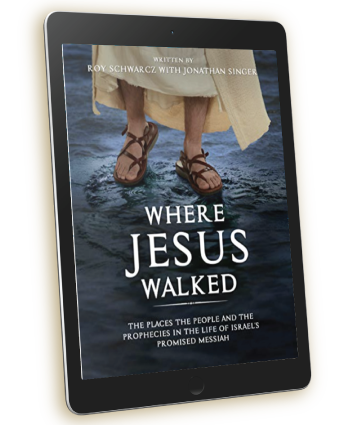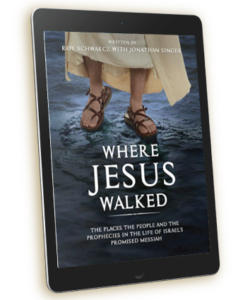Revelation 21:5-6 God speaks and tells John that is He who makes all things new. Again we reminded of the words of the prophets. Isaiah heard God say something similar (Isaiah 43:18, 19) Paul saw this in part and spoke of it in 2 Corinthians 5:17. He further declares that “I am Alpha and Omega, the beginning and the end.” Yeshua spoke this in Revelation 1:8.
Again John is hearing the voice that the prophets had heard, “I am the first, and I am the last; besides me there is no God” (Isaiah 44:6). Alpha is the first letter of the Greek alphabet and omega the last. God is the beginning and the end. The word for beginning is arche, and does not simply mean first in point of time but first in the sense of the source of all things. The word for end is telos, and does not simply mean end in point of time but the goal.
The citizens of the new heavens and earth will be those who thirst for life. God says that He will give the water of life to all those who thirst after it. To thirst after the life in the means that one thirsts to know the fullness of life that is in God Himself. These are the people that Isaiah is speaking to in Isaiah 55:1. Psalm 42:1-2 speaks of those who thirst for the Lord, and to what the Lord was referring to when He spoke with the Samaritan woman at the well (John 4:13-14). It is the water of which He spoke in John 7:37-38 and which will be fulfilled fully in John 22:17. The water in all of those passages speak of eternal and abundant life.
Revelation 21:7-8 The term “overcomer” spoken of in Revelation 2-3, is defined by 1 John 5:4-5. We will not be a kingdom of citizens, but a glorious loving family. “I will be his God and he shall be my son.” This promise was made to Abraham. “I will establish my covenant between me and you and your descendants after you, (Genesis 17:7). It was made to the son who was to inherit David’s kingdom (2 Samuel 7:14). Third, it was made in a Psalm which the Rabbis taught spoke of the Messiah (Psalm 89:27).
The promise of God to those who overcome is the same that was made to Abraham, to David on behalf of Solomon his son, and to the Messiah as we abide and rest in Him and work on our behalf. But these promises are only for the righteous, those whom Christ declares righteous. The “cowardly” or “fearful” are those who are too afraid to trust God’s Word and so, out of fear, do not trust their eternal future to Him. T abominable or polluted are those who are worldly who refuse to separate from the pleasures and possessions of this world and turn to God. The sexually impure are those who are sexually immoral including those who look and lust, read and lust, think and lust.
Sorcerers refers to those who engage in astrology, witchcraft, devil worship, spirit-ism, séances, palm reading, fortune telling, and all other forms of false beliefs that claim to reveal and control one’s fate, life and destiny, instead of trusting and putting one’s faith in God and His Word.
The Greek text makes it plain that the excluded people are those who practice these things, so this does not exclude, for instance, a believer who lies at some stage in his Christian life. It is speaking of a persistent liar.
Revelation 21:9-11 The angel who had brought the bowl judgments earlier now appears to John and tells him that he will show him the Lamb’s bride. From Revelation 21:2 the New Jerusalem is described as a bride as well since the city is home of the bride, which includes the righteous of all generations. The city as we have already mentioned has the throne of God and with it His glory in its midst.
The glory of God is the total of His attributes which includes His holiness, purity, love and light which is so bright that the city has no need of the sun or of the moon to shine on it. Isaiah spoke of that as well (Isaiah 60:19). John describes it like the valuable stone of crystal-clear jasper. Jasper here is not the stone of today which is opaque, and having a green hue; it is a transliteration of the Greek word iaspis, which is a translucent stone probably a diamond. So heaven is described as having the beauty and brilliance of God’s light reflecting off of diamonds.
Revelation 21:12-14 The description of the heavenly city is unable to be described in words we can truly understand. Some interpreters seek to spiritualize the meanings of these words, but if the words do not mean what they say who has the authority to say what they do mean? John’s description is incredible and that is probably only the half of it.
The city is described with incredibly high wall but it can be entered into through its twelve gates where twelve angels stand to give glory to God and His city. The gates have the names of the twelve tribes of Israel written upon them. As the tribes of Israel were encamped around the Tabernacle in the wilderness we find the gates ordered in similar fashion (Numbers 2). The walls are described as sitting upon twelve foundation stones, and on them were the names of the twelve apostles.
Revelation 21:15-17 The New Jerusalem is described here as being square. These are four sides facing east, north, south and west. Citizenship includes people from every nation, city, tribe, and language, from the earth. The city is enormous it is 1500 miles long and wide and high. This is a total of 2,250,000 sq miles or 3,375,000,000 cubic miles (almost four billion cubic miles). The thickness of the wall and gates is 144 cubits or 266 feet thick (v 17).
Revelation 21:18-21 describes the city’s building materials. In some cases the gems or precious stones that are mentioned differ from the valuable stones that we know today, as we have already said about Jasper. The walls are made of jasper. The city is made of pure gold that is as clear as glass.There is no gold on earth as clear as glass. Imagine the dazzling gold color of the New Jerusalem as the glory of God strikes it.
The twelve foundations are decorated with every kind of precious stone. The first foundation is jasper. The second foundation is sapphire: a sky blue spotted with gold (Exodus 24:10). The third foundation is chalcedony; a green stone. The fourth foundation is emerald a bright green. The fifth foundation is sardonyx.
A stone that has different shades of color, basically whit with layers of red and brown breaking the white background. The sixth foundation is sardius: a blood-red stone. The seventh foundation is chrysolite: a shining stone with a gold radiance. The eighth is beryl: a sea blue or sea green stone. The ninth foundation is topaz: a greenish-gold stone that was transparent (Job 28:19). The tenth foundation is chrysoprase: an apple green stone. The eleventh is jacinth: a violet-bluish-purple stone. The twelfth foundation is amethyst: also a violet, bluish-purple stone, but more brilliant that the jacinth.
The twelve gates are twelve huge pearls. Pearls were highly prized and of great value in John’s day. But these pearls were like no pearl ever produced by an oyster, because each one of the gates was a single gigantic pearl nearly 1,400 miles high. There is a spiritual truth illustrated by the fact that gates were made of pearls, as John Phillips explains:
How appropriate! All other precious gems are metals or stones, but a pearl is a gem formed within the oyster – the only one formed by living flesh. The humble oyster receives an invitation or a wound, and around the offending article that has penetrated and hurt it, the oyster builds a pearl. The pearl, we might say, is the answer of the oyster to that which injured it. The glory land is God’s answer in Christ, to wicked men who crucified heaven’s beloved and put Him to open God’s home is only because of Calvary. (Exploring Revelation, rev. ed. Chicago: Moody 1987; reprint, Neptune, NJ Loizeaux, 1991], 254).


